The Military in Malaysia: Key Roles and Modern Challenges

When it comes to defending its sovereignty, Malaysia has a robust and evolving military force.
The Malaysian Armed Forces (MAF) were formed to protect the nation from various threats.
Since its inception, the MAF has grown into a key component of national security, engaging in modernization efforts to remain effective in land, air, and sea operations.
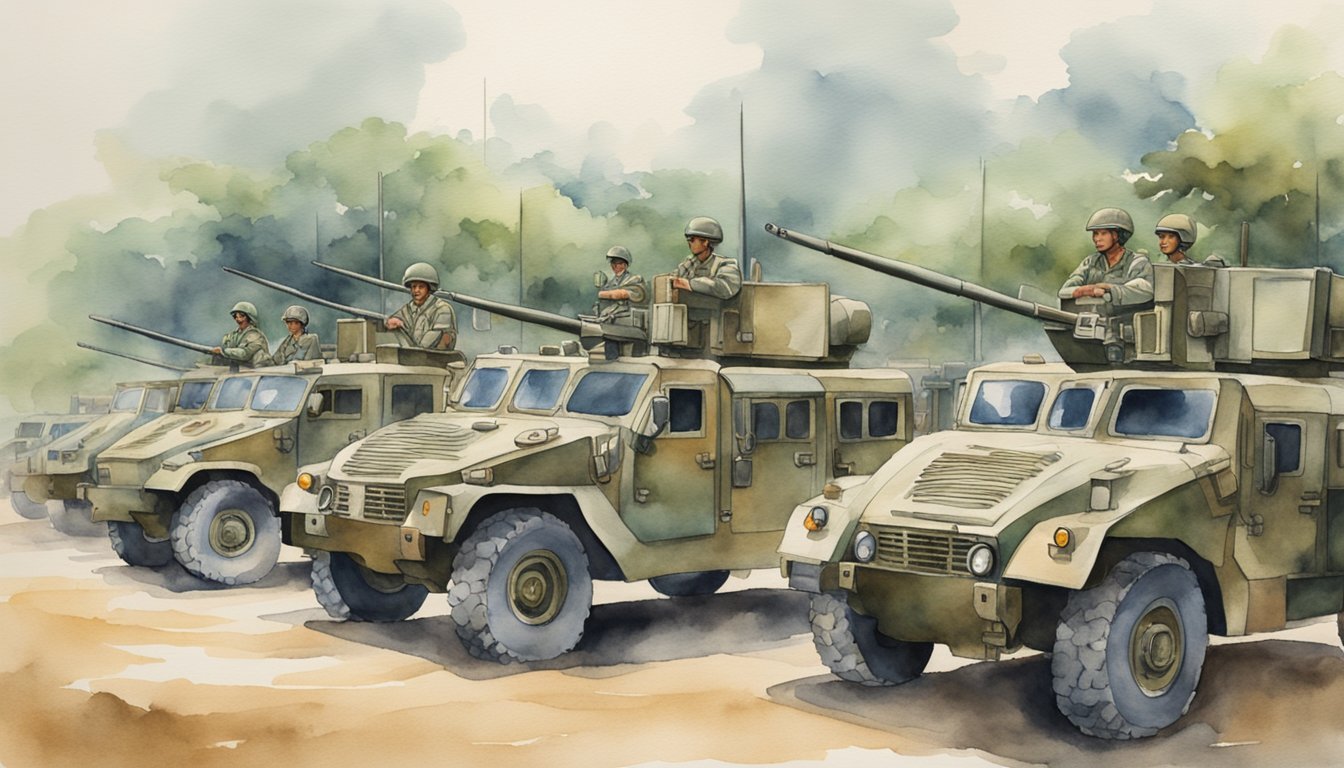
The MAF not only safeguards the country but also contributes to regional stability, working closely with neighboring countries to address common security challenges.
Territorial disputes and emerging threats continue to shape Malaysia’s defense priorities, leading to significant investments in advanced military technology and capabilities.
Under the leadership of Prime Minister Anwar Ibrahim, the current administration has shown an increased focus on defense, with budget boosts and orders for new combat aircraft and drones.
The MAF’s structure includes the Army, Navy, and Air Force, each playing a critical role in maintaining national defense and participating in international peacekeeping missions.
Key Takeaways
- Malaysia’s military protects national sovereignty and contributes to regional stability.
- The Malaysian Armed Forces continue to modernize and adapt to new security challenges.
- The current government has increased defense spending to enhance military capabilities.
History of the Military in Malaysia
The military history of Malaysia is marked by its evolving role from colonial times through significant conflicts and engagements in both domestic and international arenas.
World War II and the Emergency
During World War II, Japanese forces occupied Malaya, presenting the first major test for the military.
British colonial forces were soon joined by local resistance fighters.
The war’s aftermath saw the Malayan Emergency from 1948 to 1960, where the military fought against the Communist Party of Malaya (CPM).
This period was crucial as the Malayan national army demonstrated its capability in counter-insurgency operations.
The Malayan Emergency involved brutal jungle warfare and required modern military tactics.
The armed forces, supported by British and Commonwealth troops, played a key role in defeating the communist insurgents, showing the importance of military expertise in maintaining national security.
Communist Insurgency and Sarawak Conflict
Post-independence, Malaysia faced another challenge with the Communist Insurgency in the late 1960s.
Known as the Second Emergency, this conflict saw the CPM attempting another rebellion.
The Malaysian Army once again took charge, using lessons learned from previous conflicts to combat the rebels effectively.
Simultaneously, the Sarawak Conflict, also known as the Sarawak Communist Insurgency, erupted in the late 1960s.
This conflict required the military to engage in both counter-insurgency and peacekeeping missions.
Deploying troops to maintain stability in Sarawak was critical for the preservation of the newly formed Malaysia’s territorial integrity.
Recent Engagements and Peacekeeping Missions
In recent years, the Malaysian military has been involved in numerous peacekeeping missions, reflecting its commitment to international peace.
Notable operations include the United Nations Operation in the Congo and the United Nations Protection Force in Bosnia.
These missions helped strengthen Malaysia’s reputation as a responsible member of the global community.
The military also participated in the 1993 Battle of Mogadishu, where they assisted in a UN operation in Somalia.
Domestically, the Lahad Datu Standoff in 2013 was a significant engagement where Malaysian forces successfully resolved an armed intrusion by militants in Sabah, showcasing their readiness to protect the nation from any threats.
Structure of the Malaysian Armed Forces
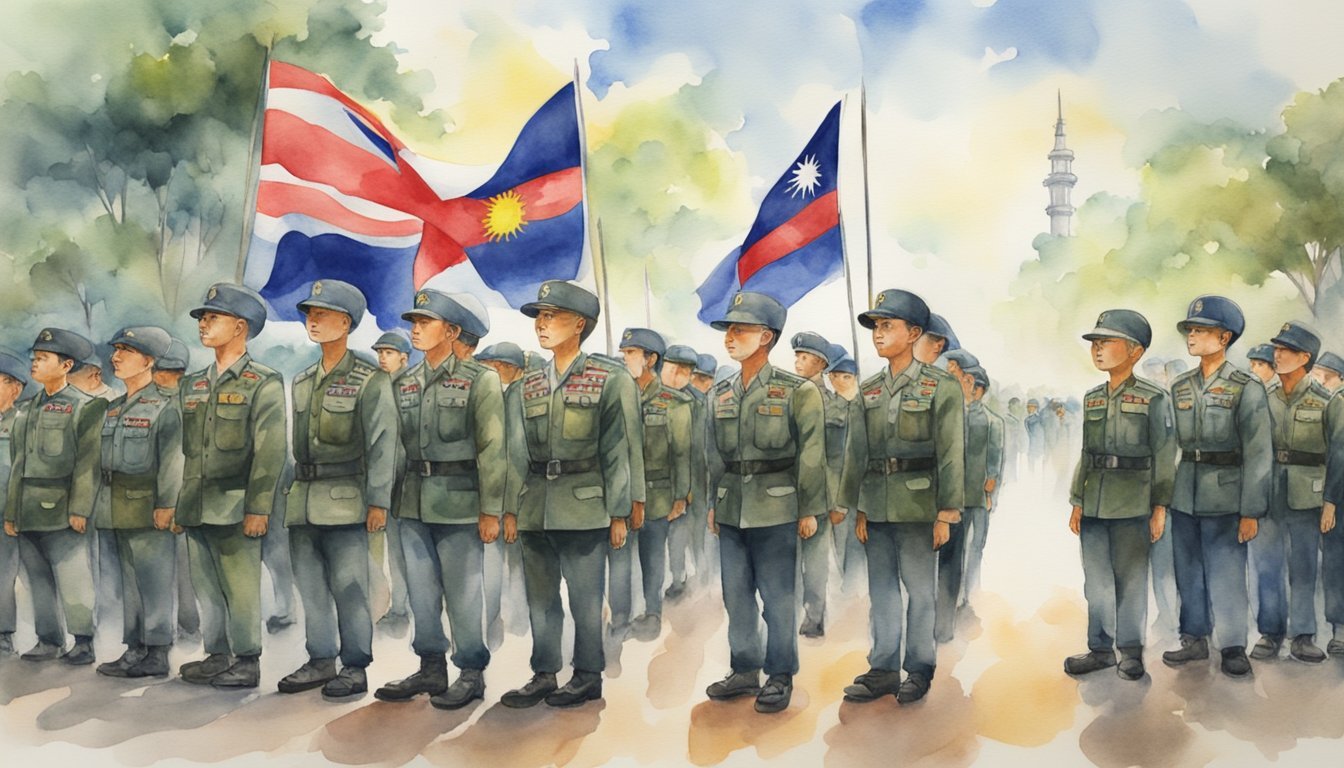
The Malaysian Armed Forces include the Army, Navy, and Air Force.
Each branch has its own unique roles and responsibilities.
Here’s a look at the different branches.
Royal Malaysian Navy (RMN)
The Royal Malaysian Navy (RMN) is in charge of maritime defense.
The main goal is to protect the country’s waters from threats.
The Navy has several classes of warships, submarines, and patrol vessels.
The RMN has both active personnel and reserve members trained to operate advanced naval technologies.
The fleet is divided into several main bases along the Malaysian coast.
Each base specializes in various operations, such as anti-piracy missions and search and rescue operations.
Malaysian Army
The Malaysian Army serves as the land component of the armed forces.
It is steeped in British Army traditions and focuses on ground-based military operations.
The Malaysian Army consists of several regiments and corps, which receive specialized training in areas like infantry, armor, and artillery.
The Army does not carry the title “royal” but instead bestows it on select corps and regiments.
Their missions include defending the nation’s territorial integrity and assisting in disaster relief operations.
Royal Malaysian Air Force
The Royal Malaysian Air Force (RMAF) handles air defense and security.
It operates various types of aircraft, from fighter jets to transport planes.
The RMAF has multiple air bases equipped with facilities for maintenance, training, and operations. Manpower includes both active and reserve personnel, all highly trained in aviation and ground support roles.
The air force’s primary tasks are to control the airspace and provide air support to other branches of the armed forces.
The RMAF also engages in humanitarian missions and disaster response.
Key Military Entities and Personnel

Malaysia’s military is made up of several important entities, each playing a vital role in the nation’s defense.
Understanding the key units and reserve forces helps you appreciate the structure and strength of Malaysia’s military.
Special Forces Units
Malaysia’s special forces include elite units like the Grup Gerak Khas (GGK) and the Pasukan Khas Laut (PASKAL).
GGK is part of the Army and specializes in counter-terrorism, unconventional warfare, and reconnaissance.
Known for their rigorous training, GGK operatives are highly skilled and versatile.
PASKAL, under the Royal Malaysian Navy, is the maritime counterpart focusing on naval anti-terrorism, underwater demolition, and hostage rescue.
These specialized units are crucial in defending Malaysia against unconventional threats and ensuring security in diverse terrains.
Another key special force is PASKAU of the Air Force, responsible for airbase security, search and rescue during combat, and counter-terrorism in aviation.
Paramilitary and Reserve Forces
Malaysia also has strong paramilitary and reserve units that supplement the regular armed forces.
The People’s Volunteer Corps (RELA) and the National Service Training Program (PLKN) are two notable forces.
These units are trained in basic military skills and can be mobilized quickly during crises.
The Royal Malaysian Police (PDRM) also has paramilitary capabilities, including the General Operations Force (PGA), which handles internal security and border protection.
The Army Reserve, which includes the Territorial Army, provides vital support.
Members of the reserve forces are typically civilians who receive regular training to stay combat-ready and can bolster the main forces when needed.
These entities ensure that Malaysia’s military remains robust, multi-layered, and prepared for various challenges.
Land Systems and Technology
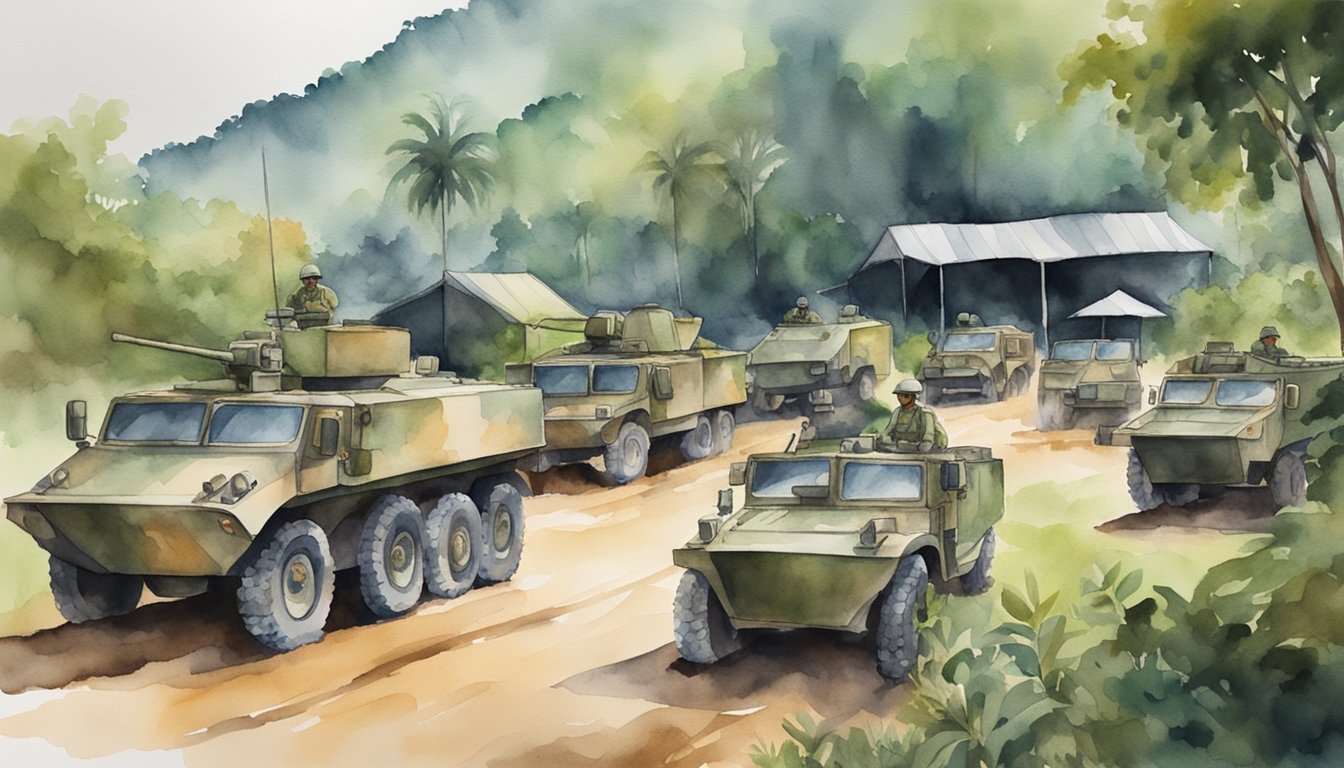
Malaysia’s military, particularly the Tentera Darat Malaysia, has been investing in modern land systems and technology.
This includes advanced tanks, armored vehicles, and various land warfare technologies that enhance operational capabilities.
Tanks and Armored Vehicles
The Tentera Darat Malaysia relies on a range of tanks and armored vehicles for its land operations.
One key asset is the PT-91M Pendekar main battle tank, which offers robust firepower and armor protection.
This tank significantly enhances the military’s capacity for direct ground combat.
Malaysia also deploys a variety of armored personnel carriers (APCs) such as the Condor and ACV-300 Adnan.
These vehicles are crucial for transporting troops safely across hostile areas.
Alongside these are support vehicles that keep operations running smoothly.
They include logistics and ambulance variants, designed to deliver supplies and medical aid quickly on the battlefield.
Artillery and Land Warfare Technologies
Artillery remains a vital component for land warfare.
The Malaysian Army utilizes both towed artillery and modern Multiple Launch Rocket Systems (MLRS).
Towed artillery like the OTO Melara Mod 56 can be rapidly deployed and offers flexible fire support for ground troops.
In terms of MLRS, Malaysia has integrated advanced systems, including the ASTROS II, which can launch a barrage of rockets over long distances.
These technologies provide strategic advantages, especially in extensive land operations.
Additionally, cutting-edge land warfare technologies like air defense radar and advanced communication systems ensure that Malaysian forces remain well-coordinated and informed during missions.
These technologies are critical in maintaining situational awareness and operational efficiency.
Naval Power and Strategy
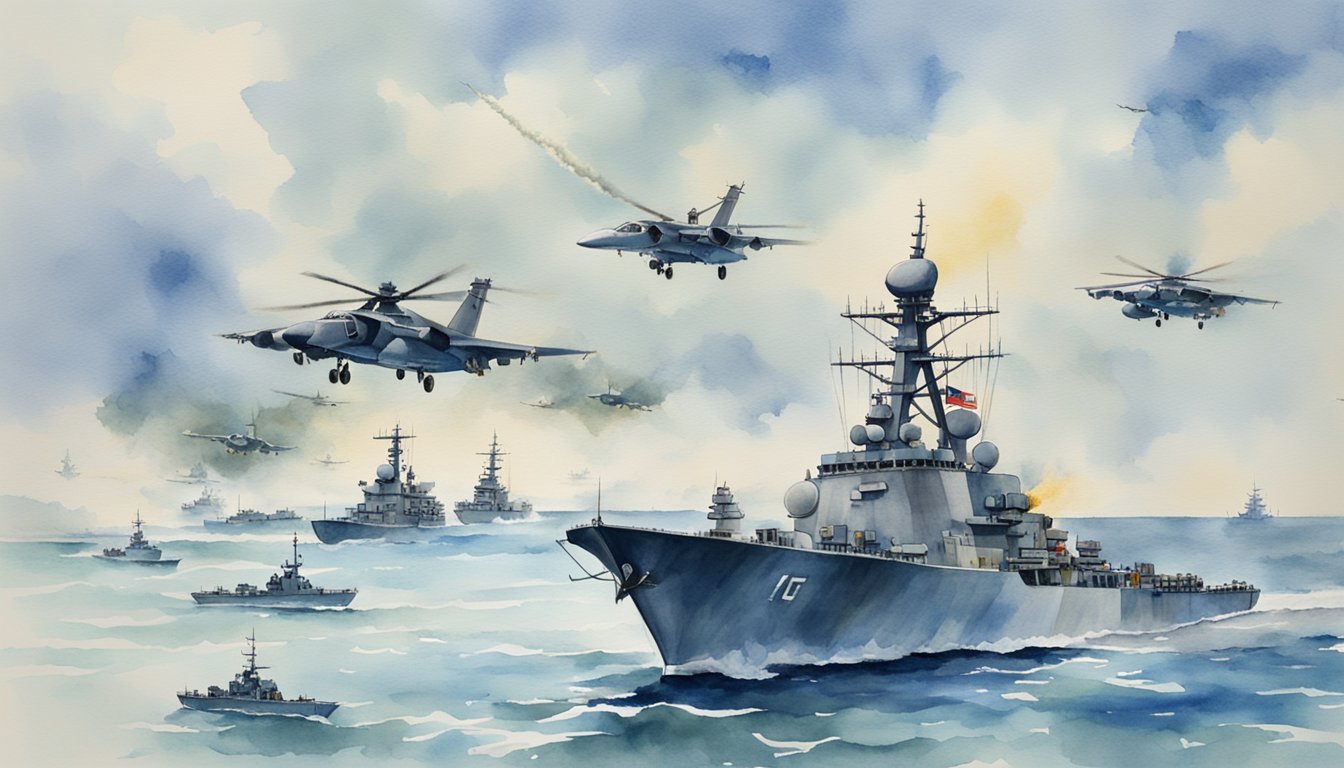
Malaysia’s naval power plays a crucial role in protecting its maritime interests and ensuring territorial sovereignty.
The focus is on improving the fleet’s capabilities with advanced vessels and modernizing current assets.
Surface Combatants and Submarines
Malaysia’s fleet consists of various surface combatants including corvettes and frigates.
These vessels help protect maritime borders and ensure control over territorial waters.
To boost sea power, newer ships like the Littoral Mission Ships (LMS) are essential.
These ships are designed for flexible roles including patrolling and rapid response.
Submarines add a layer of stealth and deterrence.
The Royal Malaysian Navy (RMN) currently operates Scorpène-class submarines.
The presence of submarines is crucial for underwater surveillance and safeguarding maritime routes.
Modernisation of the Fleet
Modernizing the naval fleet is a top priority.
Malaysia has been investing in state-of-the-art technologies and upgrading existing vessels.
Boustead Heavy Industries Corporation (BHIC) is a key player in this effort, contributing to the construction and modernization of ships.
New projects involve integrating advanced combat systems and enhancing the capabilities of naval vessels like the LMS.
These advancements improve the navy’s ability to conduct various operations effectively, from border security to full-scale maritime defense.
This ongoing modernization ensures that Malaysia can meet contemporary security challenges in the region.
Investments in technology and new ships are vital to maintaining a robust and capable navy.
Air Defense and Airpower
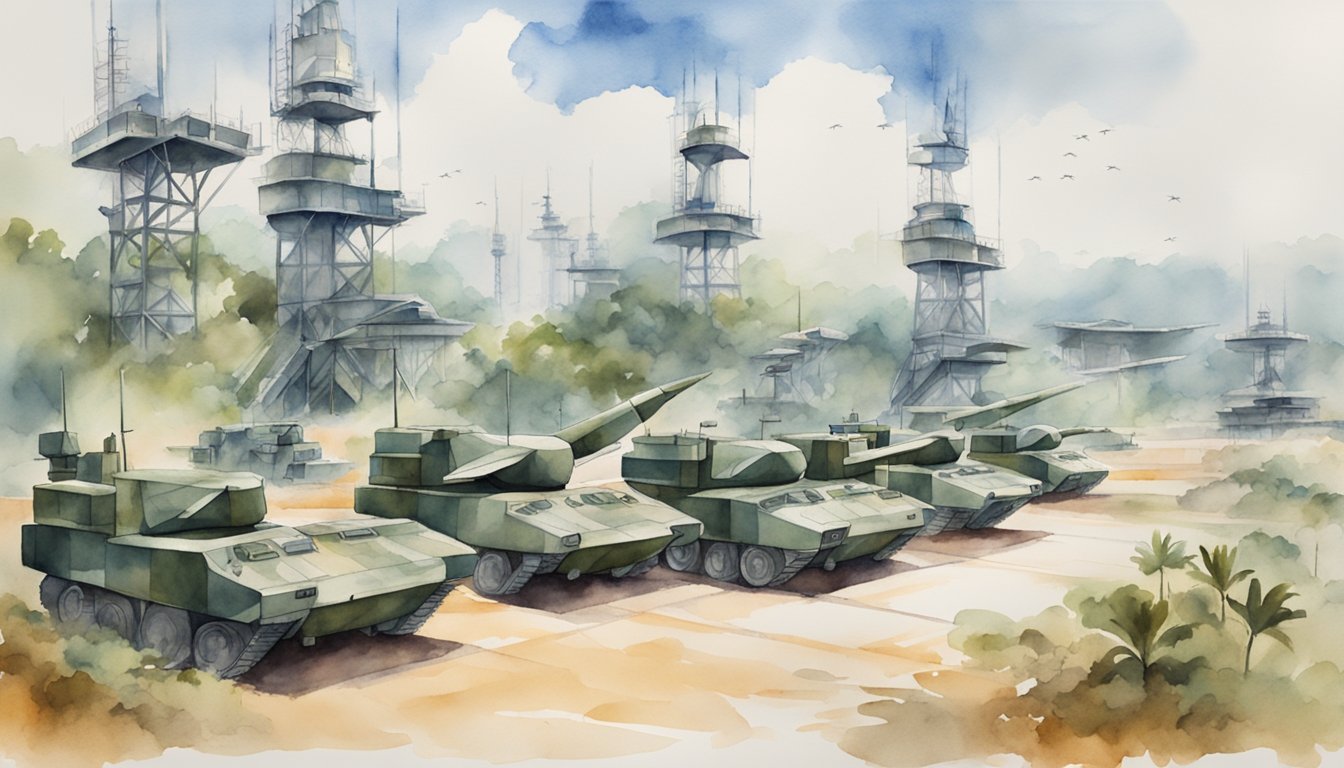
Malaysia’s air defense and airpower capabilities focus on a mix of aircraft, helicopters, and unmanned systems, bolstered by comprehensive radar coverage.
These assets are designed to protect airspace and support various military operations.
Aircraft and Helicopter Squadrons
The Royal Malaysian Air Force operates a range of aircraft for air defense.
Key aircraft include F/A-18 fighters and Su-30MKM jets, which are essential for intercept and combat missions.
Additionally, older aircraft like the Hawk 200 are still in service, providing versatile support.
Helicopters play a vital role too.
The EC-725 is used for search and rescue missions, while light utility helicopters handle various logistical tasks.
These squadrons ensure flexibility and quick response times.
Malaysia’s Air Force maintains strict training standards.
Pilots undergo extensive training to operate these advanced aircraft effectively.
This preparedness is crucial for maintaining national security and responding to threats.
Unmanned Aerial Systems and Radar
Unmanned Aerial Vehicles (UAVs) have become integral to Malaysia’s air defense.
Drones like the ScanEagle provide valuable reconnaissance data, aiding military intelligence.
These systems are cost-effective and capable of operating in challenging environments.
Radar systems are another critical element. Malaysia’s Defense Policy includes investments in cutting-edge air defense radars.
These radars detect and track potential threats, ensuring that airspace remains secure.
Both UAVs and radar systems enhance situational awareness.
They support decision-making processes and provide accurate, real-time information.
This combination of technology and strategy helps safeguard Malaysia’s skies effectively.
International Relations and Defense Diplomacy
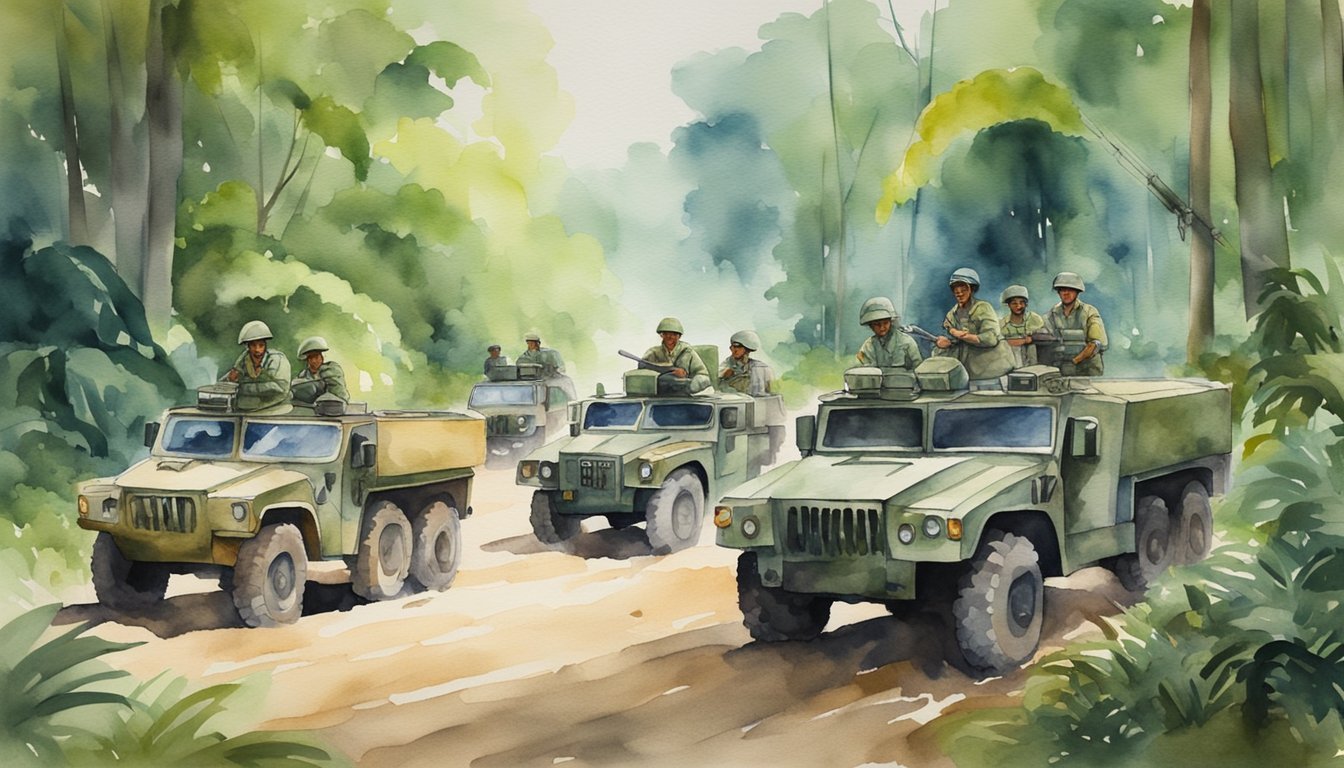
The military in Malaysia plays a crucial role in maintaining peace and fostering relationships with other nations through alliances and structured defense agreements.
Alliances and International Cooperation
Malaysia engages in various alliances to guarantee regional stability and mutual security.
One of the key partners is the United Nations, where Malaysian forces often participate in peacekeeping missions.
These missions help to promote global peace and solidarity.
In the Asia-Pacific region, Malaysia works closely with its neighbors, particularly in the context of regional cooperation.
This collaboration includes joint military exercises and training programs, which aim to enhance interoperability and readiness.
Malaysia also navigates complex sovereignty concerns, such as those in the South China Sea.
By cooperating with other nations, like China, through combined exercises and naval port calls, as noted in Malaysia-China defense relations, Malaysia strives to balance national interests with maintaining good international relations.
Five Power Defence Arrangements
The Five Power Defence Arrangements (FPDA) is a cornerstone of Malaysia’s defense strategy.
This agreement, involving Malaysia, Australia, the UK, Singapore, and New Zealand, fosters mutual defense and cooperation.
Under the FPDA, member states engage in regular military exercises to ensure their forces can operate together seamlessly.
This helps to build trust and strengthen defense capabilities.
Coordination within the FPDA goes beyond exercises, often including sharing intelligence and resources.
This cooperative framework is essential for regional security and showcases Malaysia’s commitment to international defense diplomacy.
By participating in such agreements, you contribute to a stable and secure Southeast Asia, enhancing both regional and global security.
Security Challenges and Threats
Malaysia’s military faces a range of security challenges and threats, from regional tensions in the South China Sea to participating in global security missions.
These issues require strategic planning and robust defense measures.
Regional Tensions and Territorial Disputes
Malaysia contends with significant regional tensions, particularly in the South China Sea.
Several countries, including China, Japan, and Brunei, claim overlapping territories here.
You can see how this increases the potential for conflict and requires Malaysia’s military to remain vigilant.
China has been assertive in the South China Sea, establishing military outposts on artificial islands.
This move has heightened tensions with neighboring countries.
Malaysia’s military conducts regular patrols and surveillance to protect its territorial waters and maintain sovereignty.
Japan and Brunei also have interests in this region.
The presence of multiple claims creates a complex and volatile situation.
Ensuring national security in these waters is crucial for Malaysia.
Global Security Missions
Malaysia’s military is also involved in various global security missions.
These missions often extend beyond regional conflicts, taking Malaysian forces to places like Western Sahara and Somalia.
You might find it interesting that this means Malaysia contributes to international peacekeeping and anti-piracy efforts.
In Western Sahara, Malaysian troops have participated in UN peacekeeping missions.
This involvement underscores Malaysia’s commitment to global security and diplomatic efforts.
It also helps enhance the military’s capabilities and experience.
In Somalia, Malaysian forces have been part of international efforts to combat piracy.
The waters off the coast of Somalia are infamous for pirate activities, and Malaysia’s naval contributions play a vital role in safeguarding maritime routes.
These missions help Malaysia build a reputation as a responsible global participant in maintaining peace and security.
Modernisation and Future Prospects
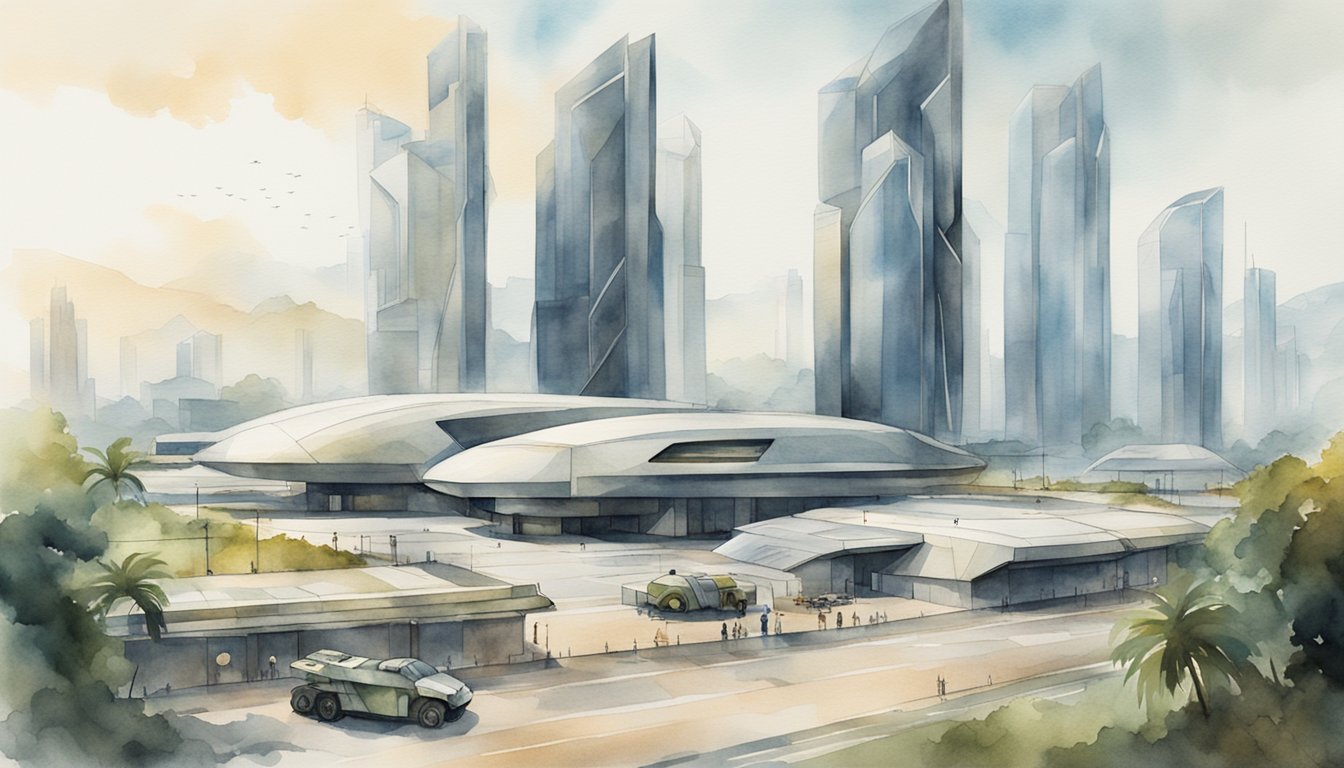
Malaysia is actively enhancing its military capabilities, focusing on both equipment upgrades and strengthening its defense technology industry.
This aims to ensure a modernized and robust military force prepared for future challenges.
Upgrades and Acquisition Plans
Malaysia has significantly invested in upgrading its military assets.
For instance, the defense budget saw an allocation of $4 billion in 2023, demonstrating a commitment to modernization.
Key acquisition plans include self-propelled 155mm artillery, although a deal for Turkish-made Yavuz 155mm guns was recently canceled by the Anwar government, signaling ongoing adjustments in military procurement strategies.
Furthermore, military modernization programs are driven by the need to protect sovereignty and address security threats such as piracy and terrorism.
Malaysia’s defense budget is projected to grow at a compound annual growth rate (CAGR) of 8.4% from 2024 to 2028, potentially reaching $6.2 billion by 2028.
Defense Technology Industry
The defense technology industry is a crucial component of Malaysia’s military modernization strategy.
Efforts are being made to boost local defense industries, providing a foundation for long-term self-reliance and reduced dependency on foreign suppliers.
This move is expected to foster job creation and economic prosperity, aligning with Malaysia’s broader strategic goals.
Malaysia’s Defense White Paper outlines the importance of a robust defense technology sector for overcoming equipment-modernisation challenges.
The government is encouraging public-private partnerships and investments in research and development to spur technological advancements.
By embracing these initiatives, Malaysia aims to become a regional leader in defense technology, securing its national security and contributing to regional stability.
The Role of the Yang Di-Pertuan Agong in the Military
In Malaysia, the Yang Di-Pertuan Agong serves as the Supreme Commander of the Armed Forces.
This role goes beyond ceremonial duties, linking the monarchy with the country’s military operations.
The King’s connection to the military starts early.
For instance, the current Yang Di-Pertuan Agong, Sultan Ibrahim, received training at the Malaysian Army Training School.
This background helps him understand military needs and challenges.
As Supreme Commander, the Yang Di-Pertuan Agong has several responsibilities:
-
Appointment of High-Ranking Officers: The King approves the selection of key military leaders, ensuring they meet the nation’s standards.
-
Strategic Decisions: While the daily operations are managed by military authorities, the King attends important meetings and discussions, influencing key military policies.
-
Ceremonial Roles: The installation ceremonies, such as the one held for Sultan Ibrahim, often include military traditions. These events symbolize the loyalty of the armed forces to the monarchy.
The King also engages in military events.
For example, during Sultan Ibrahim’s installation ceremony, there was a Royal Salute.
This salute by the Malaysian Army, Air Force, and Navy highlights the bond between the King and the military.
In summary, the Yang Di-Pertuan Agong’s role in the military is multi-faceted.
From approving leaders to participating in ceremonial events, the King plays a vital role in maintaining the bond between the monarchy and the military.
Support for Veterans and Military Families
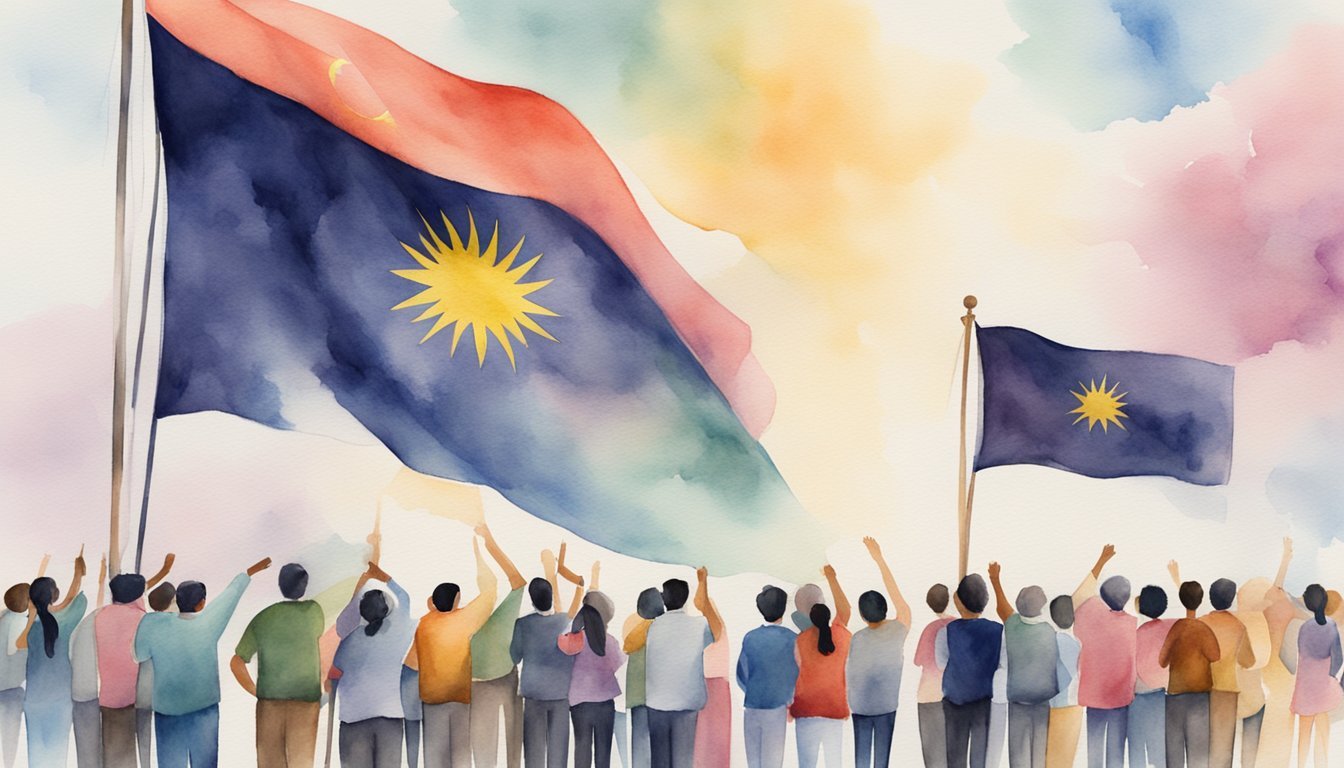
Being part of the military in Malaysia comes with unique challenges.
Fortunately, there is substantial support for veterans and military families.
The Department of MAF Veteran Affairs offers assistance when a veteran’s family member passes away.
They also provide allowances like the Malaysia Service Medal (PJM) Allowance for officers who served between 1969 to 1990.
You can learn more about these benefits here.
The government is investing heavily in military personnel and their families.
For instance, Malaysia has allocated $121 million for new housing for military families to ensure better living conditions.
More information on this investment can be found here.
For education, the National Defence University of Malaysia (NDUM) provides various programs for military members and their families.
This institution helps you gain advanced degrees and skills while serving your country.
There are also numerous resources available online to help military families.
Websites like Operation We Are Here offer a wide range of resources to support you during deployments or transitions.
Access these resources here.
By offering allowances, housing, education, and online resources, the Malaysian government and other organizations aim to ease the burden on veterans and their families.
Frequently Asked Questions
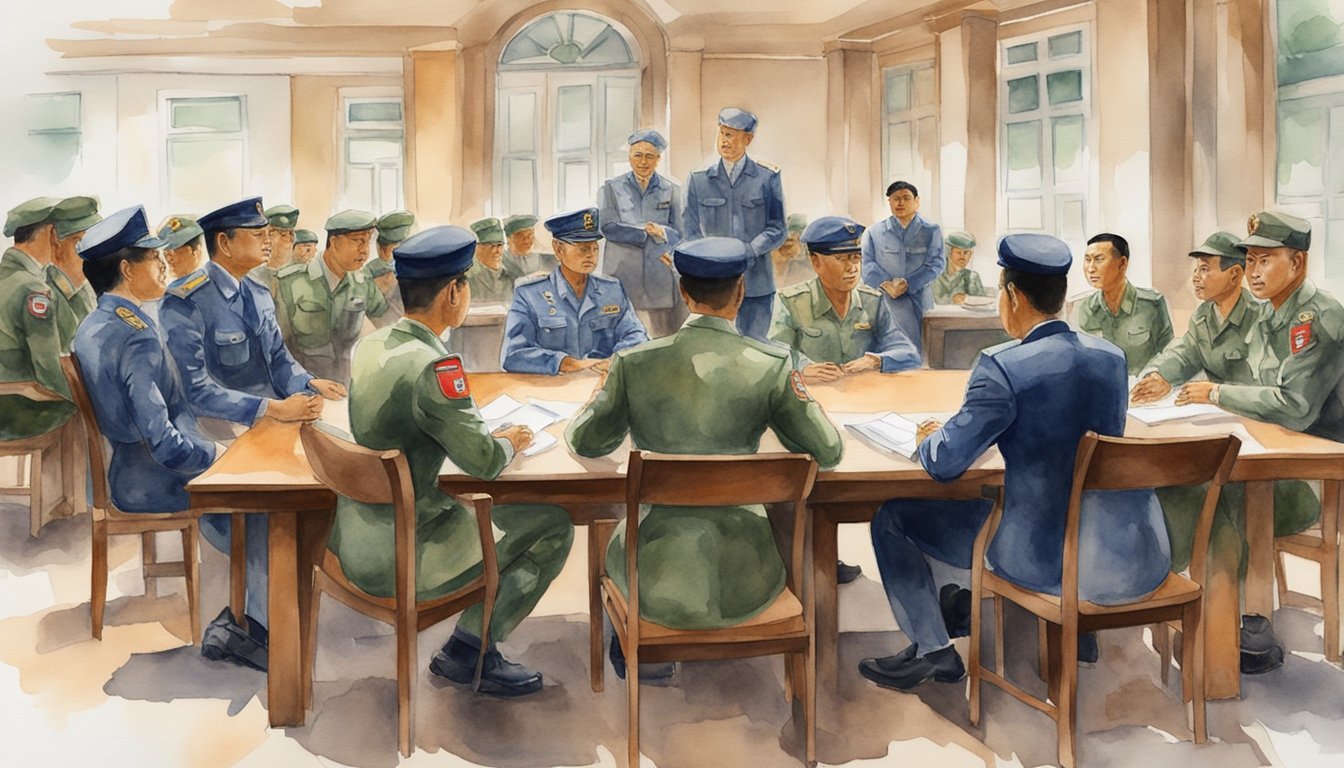
There are several points of interest about the military in Malaysia, including its global ranking, equipment, and mandatory service policies.
Find out more specific details below.
How does Malaysia rank globally in terms of military strength?
Malaysia is considered a middle power in terms of military strength.
The Malaysian Armed Forces include the Army, Navy, and Air Force, each contributing to the nation’s defense readiness.
What kind of military equipment is currently used in Malaysia?
Malaysia’s military employs a diverse range of equipment, including tactical vehicles, aircraft, and naval vessels.
They are known for using both locally-made items and imported gear from countries like the United States and Russia.
Is military service mandatory for Malaysian citizens?
Military service is not mandatory for most Malaysian citizens.
However, Malaysia has a National Service Training Programme which provides basic military training to selected youths.
What’s the total personnel count for the Malaysian armed forces?
The total personnel count in the Malaysian Armed Forces varies but typically includes around 110,000 active-duty members.
This number comprises soldiers, sailors, and airmen.
Can you tell me about the Malaysian Special Forces units?
Malaysia’s Special Forces units are highly trained for specialized missions.
Units such as the Grup Gerak Khas (GGK) and the Navy’s PASKAL focus on counter-terrorism and special operations, often collaborating with international allies.
What’s the deal with US military exercises in Malaysia?
Malaysia routinely participates in joint military exercises with the United States.
These drills help improve cooperation and readiness between the two nations’ armed forces.
They also foster better relations and prepare both countries for coordinated responses to regional threats.






